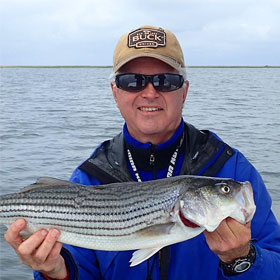A Primer on Deep Sea Fishing, a/k/a Offshore Fishing
By Ken Schultz
Jun 21, 2024
Offshore fishing, or deep sea fishing, entails the pursuit of different species and the use of different methods, on the open ocean
If you’ve wondered exactly what someone means when they refer to deep sea fishing, you’re not alone. The term does not refer to a specific fishing technique. The fishing that takes place doesn’t have to be in a deep sea, although everyone’s definition of “deep” is subjective. It may refer to fishing far out in the ocean, or it may refer to fishing close enough to view land but not physically close to the beach or shoreline.
The iconic Miriam Webster Dictionary defines “deep sea” as “of, relating to, or occurring in the deeper parts of the sea.” I look at deep sea fishing” as a term that refers to general ocean fishing and particularly to angling on charter and party boats, especially for bottom-dwelling species. It’s distinguished from fishing in shallow waters near or close to shore, or fishing from smaller boats, such as skiffs or guide boats.
While deep sea fishing used to refer to all ocean fishing in general, the term is now used less frequently. You’re most likely to see “deep sea fishing” used in promoting regional or local tourism activities. Today’s anglers generally differentiate between inshore and offshore fishing when referring to the larger topic of angling in saltwater.
“Inshore fishing” mostly refers to activities that take place close to coastal shores, within bays and estuaries, and with small to medium-size craft.
“Offshore fishing” is much more wide-ranging term and encompasses the following:
• Long-distance trips (day or multi-day) in pursuit of migratory pelagic species (such as tuna and billfish), often encompassing trolling;
• Long-distance trips for structure-oriented or bottom-dwelling species (such as amberjack, grouper, and tilefish), mostly involving bottom fishing techniques;
• Medium-distance trips in pursuit of both migratory species (such as mahi-mahi, wahoo, and mackerel) and reef and bottom-dwellers (such as snappers, groupers, and halibut), encompassing both trolling and bottom fishing;
• Medium-or short-distance trips encompassing multi-depth fishing (as on party boats) for such species as rockfish, halibut, flounder, and striped bass;
• The use of large boats. For-hire craft, such as party boats and charter boats, are especially associated with deep sea, or offshore, fishing, but so are large sportfishing yachts driven by powerhouse engines.
There are exceptions to places and boat types, of course, and large bays, sounds, or gulfs are just as likely to have deep sea fishing activities as are oceans. Deep sea fishing has its challenges and rewards. Of the latter, and unrelated to the actual fishing, is the joy people experience being in the vast offshore environment, and being in the usually blue and sometimes turquoise waters of the open ocean.









